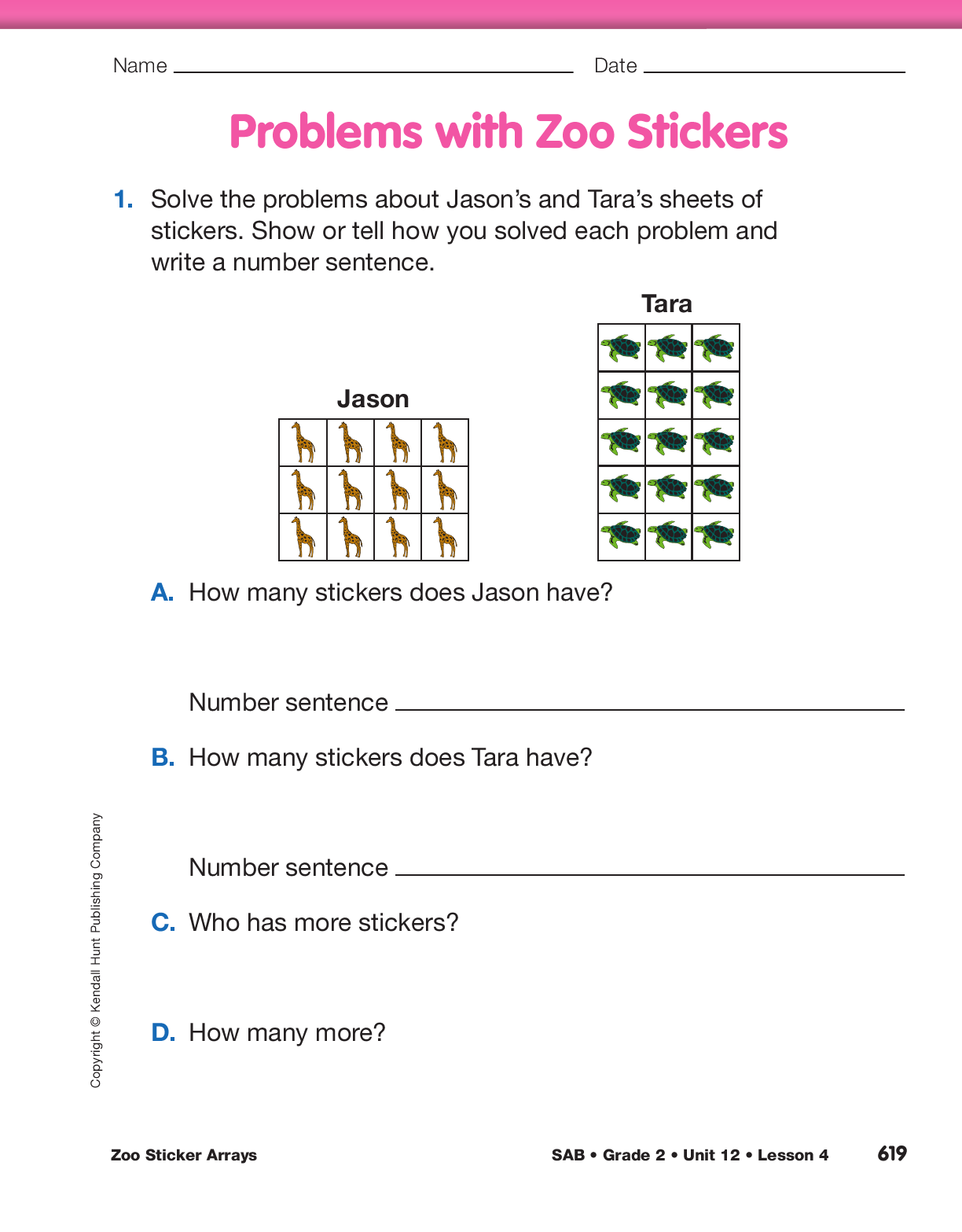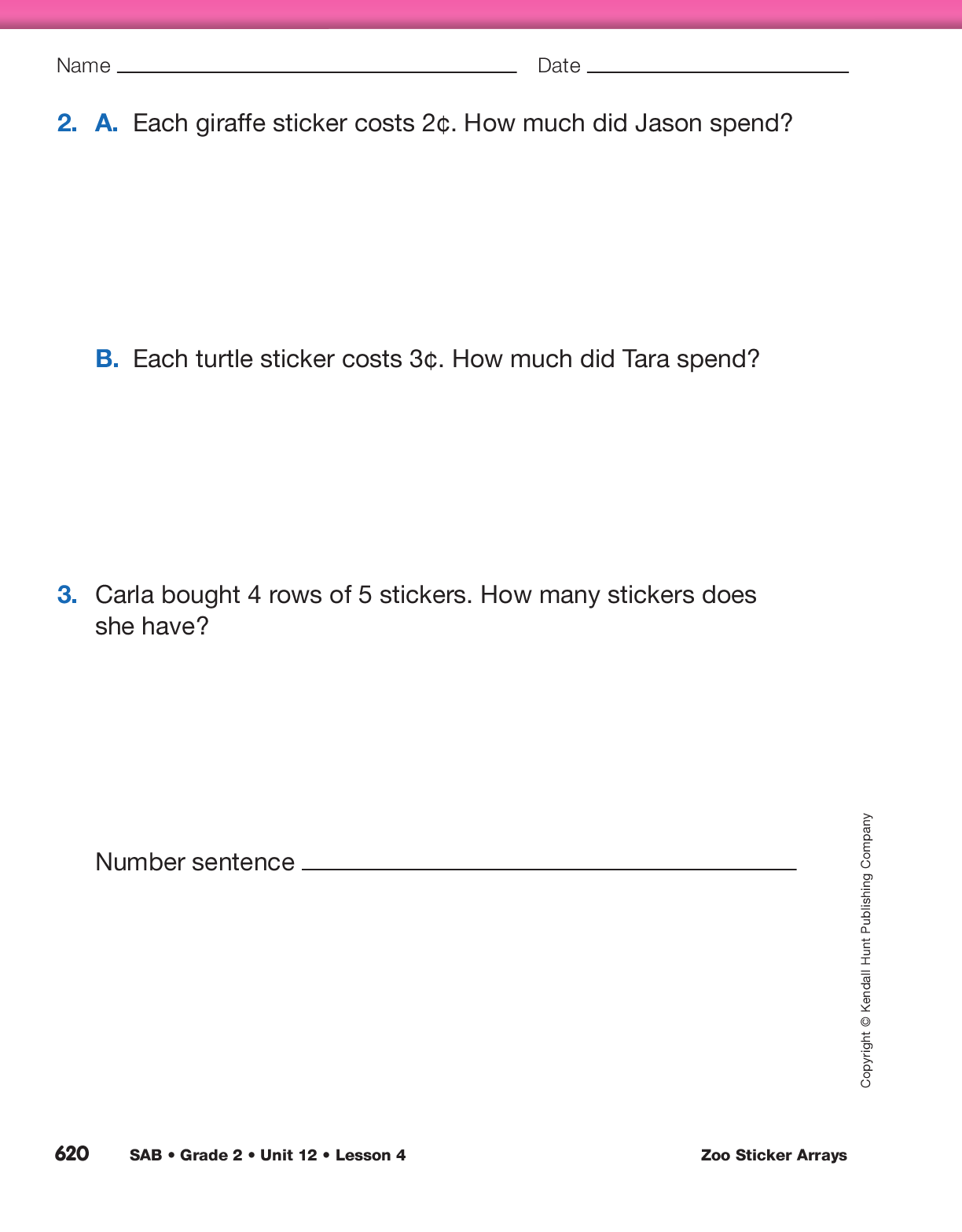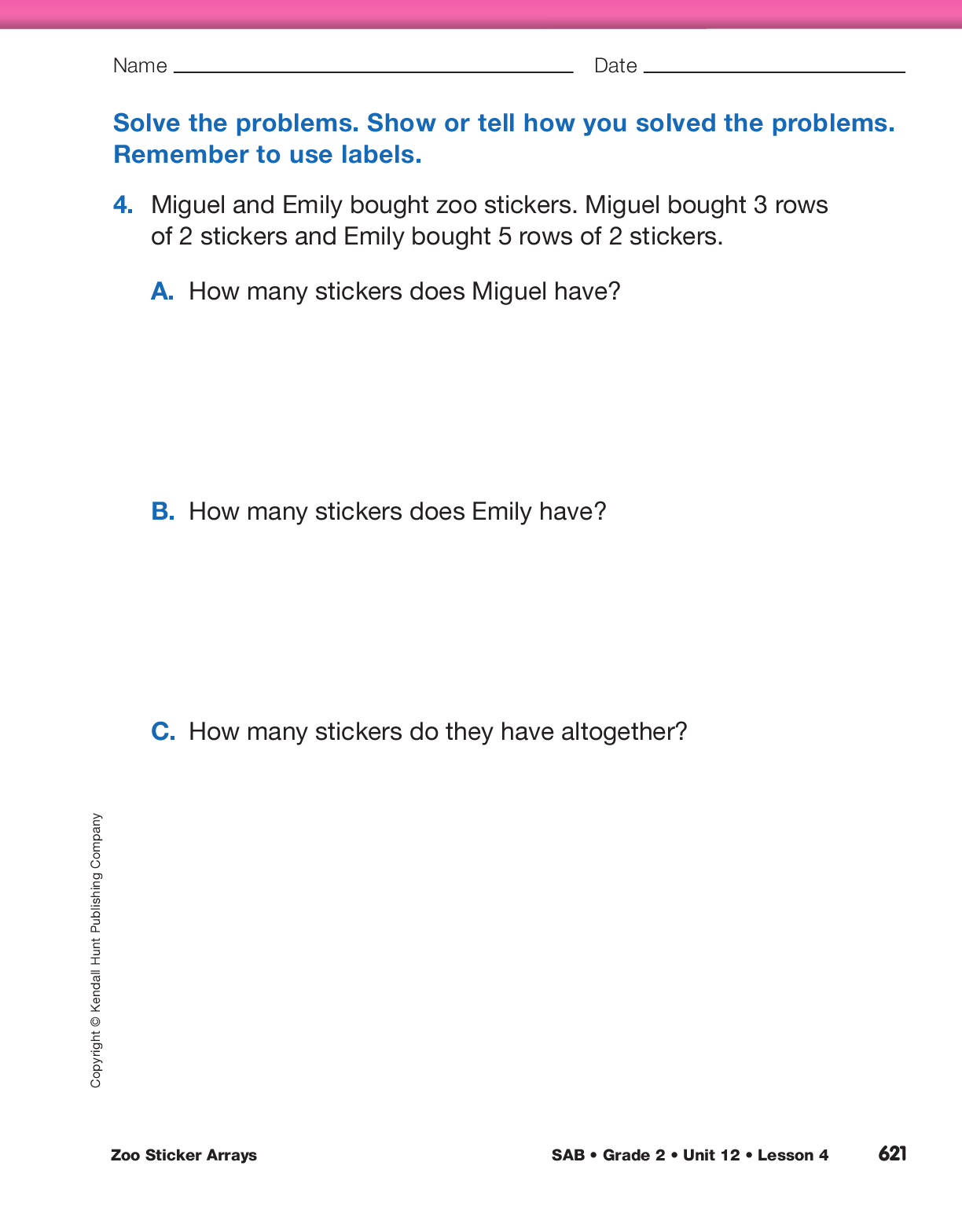Teacher: Look at Question 4 on the Cost of Zoo Stickers page. What is the question asking you to find?
Mara: What is the total cost of the sheet of stickers?
Teacher: What numbers do you need to solve the problem?
Natasha: I see the numbers 2, 5, and 3.
Teacher: How did you find the answer?
Chris: I multiplied 2 × 3 = 6 and 5 × 3 = 15. Then I added
6¢ + 15¢ = 21¢.
Teacher: Does that make sense?
Kathy: I don’t think that makes sense because he multiplied
2 rows × 3¢ and another time he multiplied
5 stickers × 3¢ = 15¢. He’s mixing up rows with stickers and he’s supposed to find the total cost of the stickers.
Teacher: That’s a good point. We have to look at the labels for those numbers. What do you need to know before
you find the cost of the sheet of stickers?
Sam: I’m not sure. I just put 3¢ on all the stickers, so I really didn’t need to answer any questions before I added all
the numbers. I added 3¢ + 3¢ + 3¢ + 3¢ + 3¢ + 3¢ + 3¢ + 3¢ + 3¢ + 3¢ = 30¢.
Teacher: Is Sam’s strategy okay?
Mark: It’s okay because sometimes drawing a picture helps you to find the answer.
Teacher: What else could you do? Sometimes we have to solve one step before we find the answer. What do you think step one is?
Sarah: I think step one is that you have to find out how many stickers there are.
Teacher: Why do you need to find the number of stickers?
Sarah: Since each sticker costs 3¢, we have to multiply the number of stickers times 3.
Teacher: How do you find how many stickers there are?
Sarah: I multiplied 2 × 5 = 10 because my array shows 2 rows of 5 stickers.
Teacher: What strategy did you use next?
Sarah: I multiplied 10 stickers × 3¢ = 30¢. I skip counted to find the answer: 10, 20, 30.
Teacher: Does your answer make sense?
Sarah: Yes, 30¢ is a reasonable answer because if one sticker costs 3¢, 10 could cost 30¢. I figured out that one row
would cost 15¢, so 2 would cost 30¢.

















